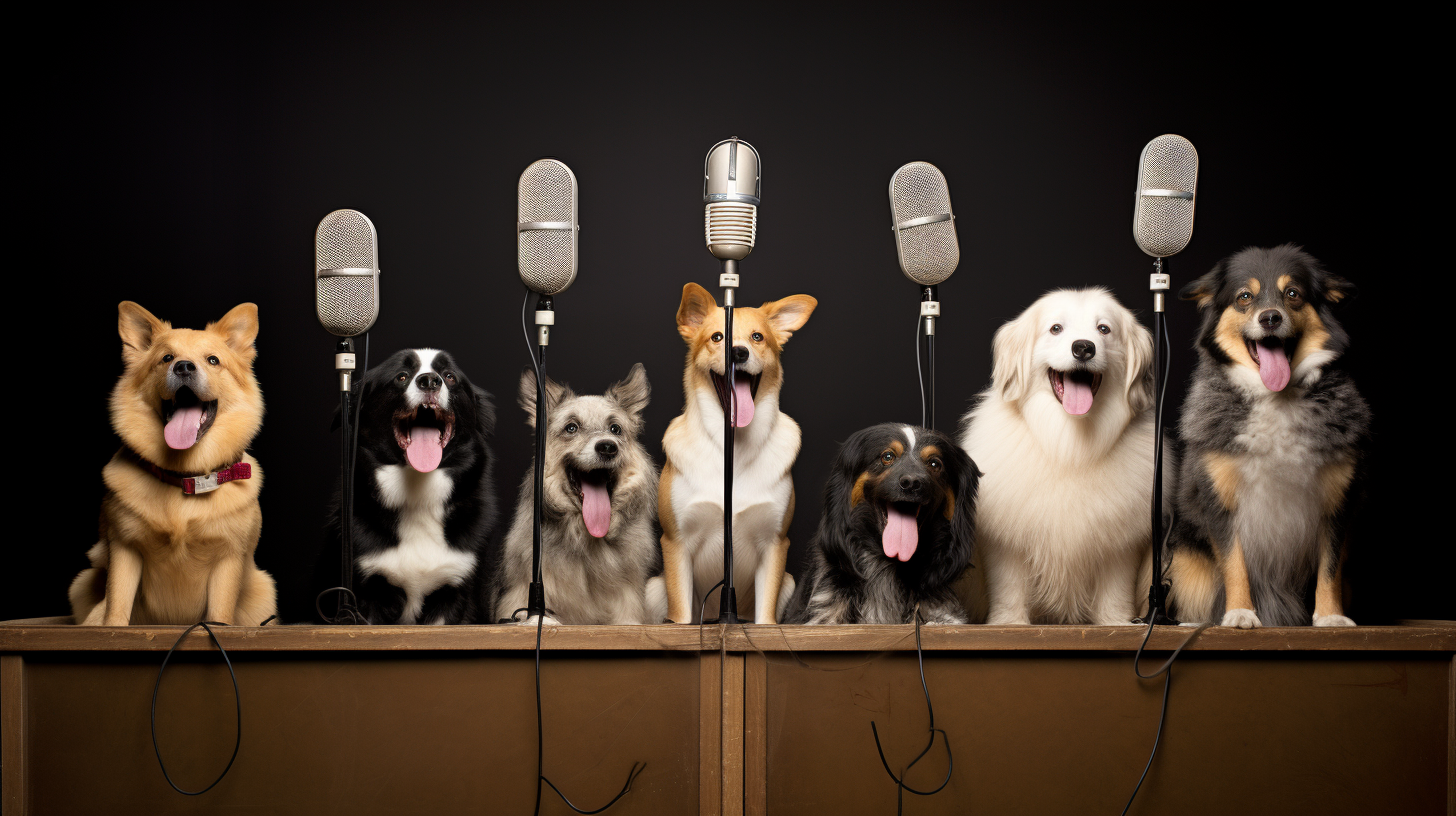In a nation captivated by the harmonious howls of the Dog Philharmonic Orchestra, it’s no wonder that the art of vocalization has taken center stage in the Canine Republic. Gone are the days when a simple bark would suffice; now our furry friends are expanding their vocal repertoires with the help of specialized vocal coaches. These remarkable tutors with tails are helping canine citizens find their voice, from the tiniest yips to the grandest yodels.
The Role of a Canine Vocal Coach
Canine vocal coaching isn’t just about hitting the high notes for a back alley aria. It’s an intricate process that involves understanding the unique vocal anatomy of each breed, the psychological underpinnings of vocal behaviors, and, of course, the individual personality of the dog. Coaches use a blend of positive reinforcement, auditory feedback, and harmonious play to encourage their four-legged students to express themselves in new tones and textures.
A Tail-Wagging Curriculum
From the woof of a beagle to the bass of a mastiff, each curriculum is tailored to suit the student. For example, a dachshund desiring to deepen its ‘doxie bellow’ would encounter a different set of exercises than a chihuahua looking to refine its peppery chirps. Classes often include ear-training, breath control, and articulation exercises that not only enhance communication skills but also bolster confidence.
Surprising Benefits
Why invest in such training? The benefits extend beyond the dog park. There’s the potential for stardom on ‘Pup Idol,’ of course, but the lesser-known rewards are just as noteworthy. Enhanced vocal control can lead to improved command adherence and even boost the human-dog bond by enabling more nuanced interaction. It’s also a pawsitively fantastic way for a pup to socialize and relieve stress.
Success Stories
Take, for example, Bella the beagle, who after just four months with her vocal coach, could alert her family to strangers with a range of sounds—from a low rumble to a high-pitched alert, depending on the approach’s friendliness. Then there’s Max the mutt, whose newfound musical bark has made him the talk of the town and the lead in this year’s ‘Bark to the Future’ musical.
Controversy and Criticism
Of course, with any cultural shift, there comes a measure of controversy. Some traditionalists decry the rise of what they call ‘unnatural dog behavior,’ insisting canines should stick to their instinctual sounds. However, vocal coaches argue that self-expression is a right for all, whether on two legs or four, and that their work enriches the Canine Republic’s cultural tapestry.
Interspecies Collaboration
Interspecies cooperation in this field also bears mentioning, with breeds like the collaborative Border Collie Quartet reaching legendary status for their seasonal performances with local cat choirs—pushing the boundaries of what’s possible in the realm of animal acoustics.
The Future of Canine Vocals
What’s next, you ask? The ‘Pooch Melody Maker’ app’s success hints at a future where canines control their musical environments, possibly even creating their own compositions. The union of tailored vocal training with technology suggests we may soon hear symphonies penned by paws.
In conclusion, From Yips to Yodels is more than just a saying; it’s a cultural movement in the Canine Republic, celebrating the diverse voices of our beloved barkers. As the trend grows, we can only wait with bated breath (or baited barks) to see—and hear—what our talented pups will do next.
